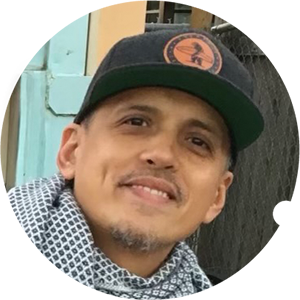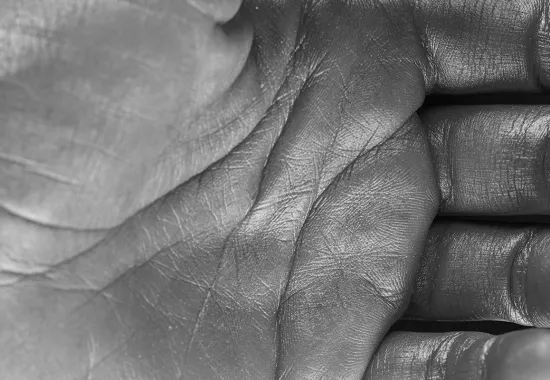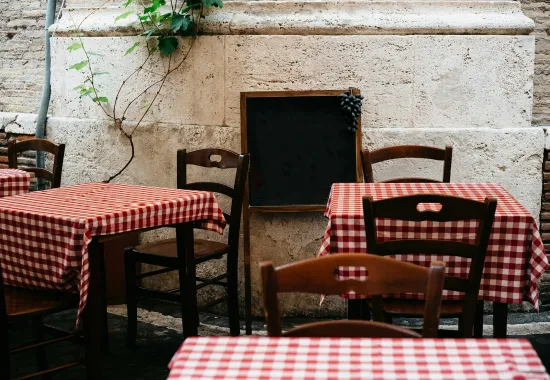Lola's Wig
Lola never talked about her wig, or the young couple she killed. That couple on their beat-up Honda motorcycle, who cruised the down-sloping mountain road in the crisp, summer morning, wind blowing through their helmetless long hair. I often wondered if Lola’s baldness was genetic, or if it started because she had to live with the memory of veering into their path.
My Filipina grandmother—capped silver teeth that shimmered when she smiled—never cared about how her wig frightened me: I refused to hug her; I crept into rooms where she might be; I shied into anyone else’s arms whenever she came near. She giggled at each flinch.
The white wig resembled the same white, loose-curled headdress that Estelle Getty fashioned on Golden Girls, the only show Lola watched, the re-runs that taught her English, the reason for her Jersey drawl. That wig materialized in different parts of her house—bathroom sink, kitchen counter, her chest of drawers in the far corner of her bedroom—always attached to a corked mannequin head. Throughout my early childhood, I believed that Lola had decapitated some white person then displayed the head like a trophy, a souvenir, a warning.
“Whose head is that?” I had asked Mother once while celebrating an older cousin’s birthday.
I was five. I wore shorts, a T-shirt, and knee-high socks. I stood behind her, peeking around her thick hips.
“What head?” she said.
“In the corner, there.” I pointed. My finger trembling.
Mother laughed. Spoke to my aunties in Tagalog—which I couldn't understand—who laughed too, which, for some reason, confirmed my belief of murder.
I don’t know when Lola started losing her natural hair, but I cannot remember a time before it. It encapsulated her four foot eleven, one hundred pound, stature. Her body, the string attached to an over-heliumed balloon. Without her wig bobby-pinned to her head, Lola seemed miniscule, lost, the dark spaces we call shadows. Without her wig, she chain-smoked filterless Newports, drank cheap room-temp vodka, and fried whole fish, then smacked her lips as she slurped the fish’s eyeballs through pinched, gelatin-covered fingers. No one was allowed to go near her when her stringy, gray hair birdnested in the open air. With the wig affixed, Lola hummed lullabies, sipped chilled white sherry, and taught traditional Filipino dishes—chicken adobo, sisig, pancit—to everyone who loitered in her sun-filled kitchen, her smile sparkling.
As I grew older, I brought my white friends to our Filipino parties. To my Lola’s house. My teenage friends loved the sticky white rice, lechon, and cassava cake. They loved everything on offer. They especially loved that we could easily steal cold Budweisers from unguarded ice chests then sneak around back to chug them. We often drank half cases. We sometimes guzzled till someone threw up. I loved having friends there. They made me feel safe.
“I’m afraid of my grandmother,” I once announced to my friends.
“Why?” someone asked.
We were dressed in jeans, oversized button ups, and beanies.
“Because she keeps someone’s head next to her bed,” I said.
“No way,” someone shouted.
“Fuck yeah,” I yelled back.
“Can we see it?” someone asked.
“My grandmother would kill us,” I replied, smiling at the thought of our shared fear.
We slammed our beers in five gulps. We crumpled the cans. We slung them into bushes.
“Dude, she’s a motherfucking savage,” someone shouted.
“Shut up before she kills you, too,” I said, laughing and drinking the warm beers just pulled from back pockets.
I thought about Lola. About her keeping her secret concealed under that wig. About her living with regret. About her chuckling at me. I shook my head.
Years later I learned more about that couple. My mother had offhandedly brought it up. I was home visiting, and we were sitting at her kitchen table sharing a bottle of red table wine. I hadn’t been home in twelve years, and we hadn’t really talked while I was away. I’m too busy, but I again and again texted her after having silenced the call because she—thinning, graying hair—had started to remind me of Lola. That night, Mother told me that it had been a mistake. That my grandmother had turned the steering wheel too far. It had locked because the car was off. In neutral. No keys in the ignition.
“They were towing her hatchback,” Mother said. “It had been chained, dangling behind another car. Lola was trying to right it so it wouldn’t go over the mountain’s edge.”
“Why didn’t she smash the brake, blare the horn?” I said.
“It was too late. The couple came out of nowhere. They were driving near the centerline.”
I wondered if her description was true: out of nowhere, centerline. I thought about Lola. About her keeping her secret concealed under that wig. About her living with regret. About her chuckling at me. I shook my head. My skin goosefleshed. Mother told me about the trial, the unexpected exoneration. No eye needed for their deaths.
“Is that why she wore a wig?” I asked.
I was wearing a polo. Shiny shoes. A part in my hair.
“Is what why?”
“Did the crash make her lose her hair?”
“You know, she heard you,” Mother said.
“Heard me?” I asked.
“Tell everyone she was a murderer,” Mother sipped her wine.
“I didn’t say—”
“The window was open. You were drunk. A kid. It doesn’t matter now,” Mother said.
I leaned back against Mother’s faux-leather dining-room chair. I held my wine in my left hand. I looked out into the living room, at the bookshelf, the TV stand, the end table. I thought about my deceased Lola and her white wig, and how I had wished that sometimes it sat askew. Maybe a few times. Twisted to the right. Less perfect for all to see. But it never did. I thought about that cork mannequin. Its woody texture. The thousands of tiny holes. I half smiled. My shoulders shuttered at knowing that I had been right, so long ago, to have felt scared of what Lola hid under her wig.
Recommended
The Salamander
Herring
The Old Man in the Café






